Mazu: Chinese Goddess Of The Sea – Protector Of Fishermen
A. Sutherland - AncientPages.com - Mazu is the most worshiped sea goddess in China's coastal areas, especially in the southeast and Taiwan islands.
Many people in China's south-eastern coastal areas and Taiwan Island live by fishing. Fisherman’s life is tough because he battles nature’s wildest elements to make a living.
Fishermen leave their homes and hope to safely return with a big catch every time they set out. Fishing from early in the morning or late in the evening, they sail on the turbulent sea, which is very dangerous.
It’s important that someone protects them and in fact, they strongly believe that Mazu - the goddess of the sea, is their protector.
The fishermen have created a sea goddess - "Heavenly Queen" - for blessing and protection.
Every year, on the 23rd day of the third lunar month, which is said to be the birthday of Mazu, fishermen go to the Mazu temple to worship the goddess with great piety instead of going fishing on the sea.
The image of Mazu depicts a lady wearing a crown and a dragon robe. At the Mazu Festival, some middle-aged and elderly women dress up in traditional style by wearing a flat hair coil, red coat, and black pants and they burn incense to pay tribute to Mazu.
An ancient legend says that Moniang Mazu was the daughter of Lin Yuan, the superintendent of Fujian in the early Northern Song Dynasty.
Her name Moniang means "silent girl", because she didn't cry at birth. In her early teens, she began to burn incense and chant sutras. At the age of 16, she was given a bronze talisman by an immortal and she then achieved Taoist success and became an immortal herself. She performed a lot of magical feats. At 28, she ascended Meifeng Peak, where she became a divinity. After that, Moniang roamed across the country, rescuing and helping fishermen in distress at sea.
Solving troubles for the people, Mazu often appeared in the dream visions. People always saw her showing nearby the rocks and water holes, sitting on a dish covered with clouds and mist, or flying in red garments over the sea.
Local fishermen built a temple in Moniang's hometown—Meizhou Island, to pay respect to her and worshiped her as "Mazu".
China’s Yuan Dynasty (1271–1368) continued the maritime trading legacy of the Tang and Song dynasties and marine trade was developing fast. People living in Northern provinces also began to worship Mazu for safe sailing.
The worship of the goddess Mazu, a protective lady from the sea, began to spread to Southeast Asian nations. Mazu became the protection goddess of Chinese people in all countries.
According to statistics, there are over 0.2 billion Mazu worshipers across the world. The goddess is not only worshipped in coastal areas of Fujian and Taiwan but also worshipped in overseas places inhabited by the Chinese, such as Southeast Asian nations and America’s Honolulu, where Mazu temples have been built.
Written by – A. Sutherland AncientPages.com Staff Writer
Copyright © AncientPages.com All rights reserved. This material may not be published, broadcast, rewritten or redistributed in whole or part without the express written permission of AncientPages.com
Expand for referencesMore From Ancient Pages
-
 Young Girl Finds Rare Ancient Megalodon Shark Tooth On Maryland Beach
Archaeology | Jan 16, 2023
Young Girl Finds Rare Ancient Megalodon Shark Tooth On Maryland Beach
Archaeology | Jan 16, 2023 -
 Modern Humans Have Their Homeland In Botswana – New Study
Archaeology | Oct 29, 2019
Modern Humans Have Their Homeland In Botswana – New Study
Archaeology | Oct 29, 2019 -
 Humans Were Apex Predators For Two Million Years
Archaeology | Oct 18, 2022
Humans Were Apex Predators For Two Million Years
Archaeology | Oct 18, 2022 -
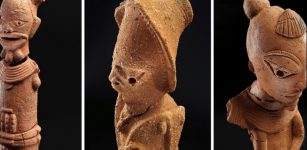 Honey-Collecting In Prehistoric West Africa From 3500 Years Ago – Pottery Examined
Archaeology | Apr 14, 2021
Honey-Collecting In Prehistoric West Africa From 3500 Years Ago – Pottery Examined
Archaeology | Apr 14, 2021 -
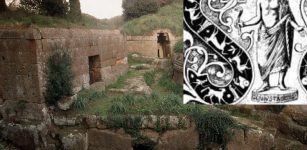 Tages: Etruscan Prophet Who Revealed Sacred Knowledge Before He Vanished
Featured Stories | Mar 1, 2016
Tages: Etruscan Prophet Who Revealed Sacred Knowledge Before He Vanished
Featured Stories | Mar 1, 2016 -
 Secret High-Tech Knowledge Hidden In Ancient Manuscripts And The Mysterious Seven Sky Kings
News | Aug 24, 2021
Secret High-Tech Knowledge Hidden In Ancient Manuscripts And The Mysterious Seven Sky Kings
News | Aug 24, 2021 -
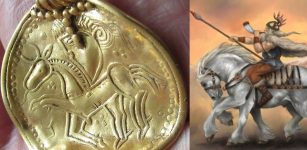 Discovered Gold Pendant Of Odin And His Horse Sleipnir Might Be Linked To The Heruli Tribe
Archaeology | Apr 16, 2016
Discovered Gold Pendant Of Odin And His Horse Sleipnir Might Be Linked To The Heruli Tribe
Archaeology | Apr 16, 2016 -
 Administrative Centre Dated To 2181–2055 BC Unearthed In Kom Ombo, Upper Egypt
Archaeology | Mar 4, 2022
Administrative Centre Dated To 2181–2055 BC Unearthed In Kom Ombo, Upper Egypt
Archaeology | Mar 4, 2022 -
 Surprising DNA Study Links Present-Day Native American Tribe To Ancestors In San Francisco Bay Area
Archaeology | Mar 22, 2022
Surprising DNA Study Links Present-Day Native American Tribe To Ancestors In San Francisco Bay Area
Archaeology | Mar 22, 2022 -
 Creepy Story Of Lucida Mansi Who Was Obsessed With Her Beauty
Featured Stories | Jul 31, 2019
Creepy Story Of Lucida Mansi Who Was Obsessed With Her Beauty
Featured Stories | Jul 31, 2019 -
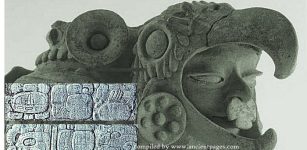 On This Day In History: Powerful Warlord And Emissary Of Spear-Thrower-Owl Arrived At Tikal – On Jan 8, 378 AD
News | Jan 8, 2017
On This Day In History: Powerful Warlord And Emissary Of Spear-Thrower-Owl Arrived At Tikal – On Jan 8, 378 AD
News | Jan 8, 2017 -
 Sacred City Of Caral – Site Of The Oldest Known Civilization In The Americas
Civilizations | Aug 28, 2018
Sacred City Of Caral – Site Of The Oldest Known Civilization In The Americas
Civilizations | Aug 28, 2018 -
 On This Day In History: Viking Forces Laid Siege To Paris – On Nov 25, 885
News | Nov 25, 2016
On This Day In History: Viking Forces Laid Siege To Paris – On Nov 25, 885
News | Nov 25, 2016 -
 On This Day in History: Brilliant U.S. Chess Champion F. J. Marshall Plays 105 Games Simultaneously – On Mar 21, 1916
News | Mar 21, 2017
On This Day in History: Brilliant U.S. Chess Champion F. J. Marshall Plays 105 Games Simultaneously – On Mar 21, 1916
News | Mar 21, 2017 -
 Inscription On Rare Tetrarchic Boundary Stone Found At Biblical Site Of Abel Beth Maacah, Israel Has Been Deciphered
Archaeology | Jan 21, 2025
Inscription On Rare Tetrarchic Boundary Stone Found At Biblical Site Of Abel Beth Maacah, Israel Has Been Deciphered
Archaeology | Jan 21, 2025 -
 Mysterious Steles Of Mongolia – ‘Deer Stones’ In The Tsatsyn Ereg Necropolis
Archaeology | Jan 23, 2019
Mysterious Steles Of Mongolia – ‘Deer Stones’ In The Tsatsyn Ereg Necropolis
Archaeology | Jan 23, 2019 -
 Rare Collection Of Roman Coins Unearthed In Ancient City Of Aizanoi, Turkey
News | Feb 4, 2021
Rare Collection Of Roman Coins Unearthed In Ancient City Of Aizanoi, Turkey
News | Feb 4, 2021 -
 On This Day In History: ‘Edict Of Nantes’ About Freedom Of Religion Issued By Henry IV – On Apr 13, 1598
News | Apr 13, 2017
On This Day In History: ‘Edict Of Nantes’ About Freedom Of Religion Issued By Henry IV – On Apr 13, 1598
News | Apr 13, 2017 -
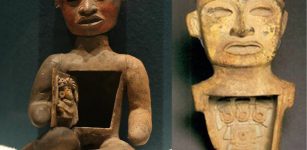 Mysterious Teotihuacan ‘Host’ Figurines From Metepec, Mexico
Artifacts | Jan 6, 2016
Mysterious Teotihuacan ‘Host’ Figurines From Metepec, Mexico
Artifacts | Jan 6, 2016 -
 Magnificent Etruscan Underground Burial With Beautiful Artifacts Discovered In Aleria-Lamajone, France
Archaeology | May 13, 2022
Magnificent Etruscan Underground Burial With Beautiful Artifacts Discovered In Aleria-Lamajone, France
Archaeology | May 13, 2022


